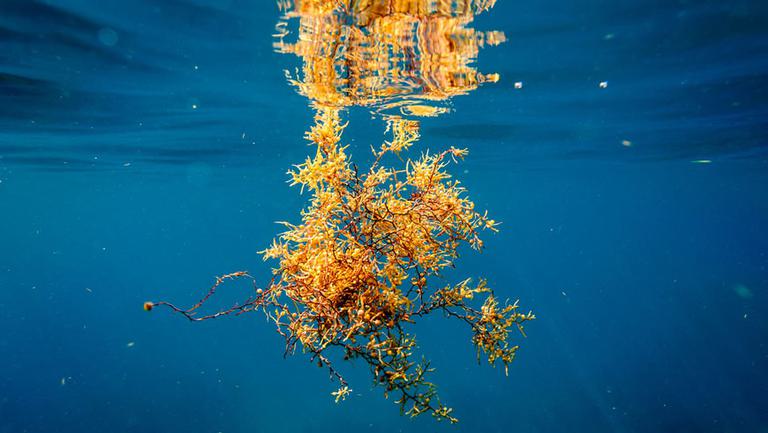According to local resident Margaret Barwick, author of Tropical & Subtropical Trees, the emphasis should be on respecting and incorporating the indigenous flora where possible and preserving threatened environmental resources (i.e. don’t chop down that stunning old tree when you are clearing a plot of land for a property – move and replant it or keep it and work around it).
For garden maintenance and basic landscaping there are numerous companies that can help you.
There are very good plant nurseries that sell plants, herbs, trees, soil, and have experienced staff that can guide you as to what will work best in Cayman. Most garden centres also carry plant pots and accessories. Keep scrolling for recommendations on plants and trees that grow well in Cayman, and recommendations on others to avoid.
Plant Nurseries & Garden Centreskeyboard_arrow_right
Grand Cayman has a large selection of plant and tree nurseries which carry plants and shrubs of all sizes, as well as garden accessories. They can also offer landscaping advice. Below are some reputable options.
Recommended Plants
Planting indigenous trees supports the local wildlife (birds and bees, in particular), they will also be less affected by pests, and will bounce back far quicker after a major storm.
While coconut trees are fast growing palms and provide nuts filled with delicious water and jelly, the nuts may fall and hurt children if they play under them, so have the coconuts removed often.
The Neem tree is a fantastic shade tree that grows fast and is drought-resistant. Also the bark, seeds and leaves contain compounds with proven antiseptic, antiviral, antipyretic and anti-inflammatory properties. It is non-toxic to birds and is an important honey plant (i.e. bees love it).
A huge shade tree with a large symmetrical umbrella-shaped crown is the Samanea Saman or Guango tree as it is known in Jamaica. It has a wide canopy and folds its leaves when it rains and at night. It has pink flowers which butterflies and bees love.
Another wonderful option is the Mahogany, an indigenous, endangered tree that does remarkably well in marl-filled land as it is salt tolerant, hardy and fairly fast growing. It is another important honey plant.
Though they do not grow as large, the Puoi, Poinciana and Tabebuia trees are also very popular in the Cayman Islands and are easily spotted with their showy canopy of bright flowers.
A very popular tree to plant in Cayman is the Black Olive whose shape is reminiscent of the oak and it grows into a superb shade tree.
Not to be forgotten are fruit trees: Mango trees are slow growing but they are wonderful when they bear fruit! Investigate the different varieties and choose a species whose fruit you love. A couple of amazing ones which don't have strings in them are the Bombay, Carrie, Nam Doc, Keitt and the Nelson. Two other good fruit tree options that offer shade and grow fast are the Breadfruit and the Ackee tree.
The Seagrape tree is salt and wind tolerant, has large round leaves and a lovely silver bark. The Tamarind tree isn’t native but birds love it for nesting and it’s highly wind and salt tolerant. The Indian Almond, also naturalised, grows fast and gives a huge amount of shade but it does make a lot of leaf debris. Fruit bats and chickens love the almonds.
Bush Girl Medicine is a useful blog where you can learn more about local plants and their historical uses.
Plants to Avoid
Some plants and trees are best to avoid whether because of aggressive roots, even more aggressive birds or their impact on indigenous plants and animals.
Avoid planting the Casuarina which is not native and very invasive. Fallen needles inhibit the growth of indigenous plants and it does not support any local wildlife. It also offers little or no shade. A tree that has a beautiful display of flowers as soon as the first heavy rains fall is the Red Poinciana Tree, however, it stands gauntly naked during the dry months and is not ideal if you are looking for shade. It also should not be planted anywhere near masonry or pools as the roots are highly aggressive.
Still on the list of the most-unwanted, the Christmas Palm falls firmly in this court mainly because it is the preferred nesting site of the Ching Ching bird; during their nesting period the Ching Ching becomes very defensive and any human, or animal that ventures close will be viewed as a potential predator. A strike on the head by a Ching Ching, though not dangerous is painful and shocking if it is unexpected. Note: Ching Chings are protected under the Animals Law. Disturbing the birds and their nests is an offense. The best course of action is to monitor the nest and as soon as the baby birds have fledged remove the tree.
At the top of the list of scrubs and bushes to be discouraged is the Scaevola which is highly invasive. It crowds out other vegetation and its small white fruit are inedible to birds or other animals. A good alternative is the Green Buttonwood.
Please remember that when planting a tree, if you plant a CI$400 tree in a CI$25 hole you will get a CI$25 tree! You must give it lots of room and lots of soil to get a beautiful tree. Most trees are (gently) pruned in June and July, just as the heavy rain begins.
Poisonous Plants
If you have children, it is worth noting that there are a small number of plants that can be dangerous if ingested, or in some instances, touched.
Maiden Plum is fairly common in the more agricultural parts of Cayman and its sap is highly corrosive. It has large, compound leaves and can cause a nasty red rash and welts on the skin, that spread through touch.
Another plant to avoid is Lady Hair which is covered in fine, yellow hairs that react with the skin, causing irritation and redness. The Manchineel tree is the most dangerous plant in the Caribbean. Fortunately, it is not very common. The sap, fruit and smoke are highly caustic and can cause severe burns. Water that passes through the plant effectively becomes acid rain and the ‘death apples’ of the plant are highly poisonous.
A pretty and sturdy plant, the Oleander is more commonly found in gardens, but it can be dangerous, particularly to children and small pets, and all parts of the plant are very toxic if ingested. Skin irritation can also occur upon contact with the sap.
Last, but not least, the Desert Rose is a very beautiful but highly toxic plant which, if ingested, can lead to toxicity and possibly cardiac arrest. The plant has a swollen trunk and branches, dark, fleshy leaves and clusters of pink or purple flowers at the branch tips.
If you are worried that a child has ingested part of a plant from your garden, and your child is conscious and alert, it may be a good idea to call the Center for Disease Control and Prevention (CDC) Poison Helpline (Tel: 1 800 222 1222). The line is open 24 hours a day, seven days a week and the operator will advise you whether the plant is dangerous and either talk you through what to do next, or advise you to admit your child to a hospital.


